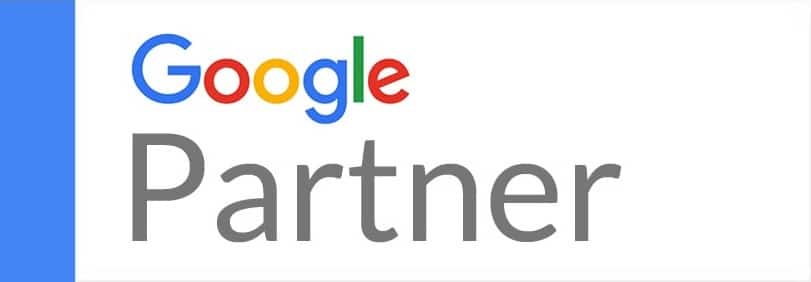Your PPC campaign is shredding your budget like a carrot in a blender.
You diligently followed best practices, believing they would lead to a high return on investment, but that’s not what is happening. There are almost no conversions, your cost per acquisition is unsustainable, and you are learning nothing about your customers.
You had such high hopes when you first launched the campaign. You carefully researched your audience, selected your keywords with care, and took the time to create great ads and specific landing pages. This should be a highly profitable PPC campaign.
Do Not Try To Kiss Your Customer On The First Date

The reason your PPC campaign isn’t working is you tried to kiss your customer on the first date. Not literally, of course, but it’s a good analogy for what is happening. Think of it like this: You are on a first date. You seem to be hitting it off. Then, as you are eating dinner and getting to know each other, you suddenly lunge across the table and try to kiss your date.
This is similar to what you do to visitors you bring to your website via PPC when you aggressively try to sell to them but they are not ready to buy. You see, many searches are initial informational searches, and the user is not ready to make a purchase.
Instead, they want to get to know your company and business first. If these users are looking for information and are taken to a completely sales-oriented landing page, they will leave and find a competitor’s site that gives them what they want. Your overly pushy sales page offers no value to them. Date over.
Customers Tell You What They Want In Search Queries
Users tell you what they are looking for with the words in their search query. You just have to pay attention.
With each search, they express to you “I am ready to buy,” or “I just need more information,” or “I am comparing your product or services against others.” You just need to read between the lines and think about what they are communicating.
For example, there is a huge difference in search intent between the search queries buy a flat-screen TV in Philadelphia and what are the benefits of a flat-screen TV over a plasma TV. If you simply bid on the keyword flat-screen TV and try to sell to the users on both of these search queries, then you will waste your money. You will match the keyword, but you will not match the search intent. You want to be able to provide what the user is requesting.
Use Search Queries To Create Offers That Match Intent
The way to solve this problem is to use a strategy that probably is the reverse of how you normally do business. Don’t create a single product and buy keywords that only “sort of” match it.
Instead, review your customers’ search queries, understand their intent, and create a variety of offers to match that intent. This way, you are always the right answer, and you provide your potential customers with real value. You are not sending users who are looking for information to a sales page that doesn’t match their intent. You are not trying to kiss them before they are ready!
Of course, this has to benefit your business and impact the bottom line as well. If the offer you create is informational and you are not immediately selling your product, then you are providing something of value to the consumer such as an e-book, webinar, or even an email e-course. The value comes back to your company in the following ways:
- As the user reads the e-book, your company is seen as the industry expert.
- You receive the user’s contact information so you can email market to them at a later time when they are in more of a buying frame of mind.
- You can install a line of code on your site, which allows you to remarket to users as they travel around the Internet.
- You are not seen as pushy, and users will come back to you for further information when they are ready to buy.
You are acting like a business that understands the buying cycle. You have a potential customer that sees value in your company. You are able to continue to efficiently market to someone who is known to be interested in your product or service as they go through the buying funnel. It’s a second date, if you will.
How To Create Offers That Match Search Queries’ Intent
1. Gather Your Search Queries
The first step in creating an offer that matches the search query’s intent is to review the search queries that are triggering your ads. Many newcomers to PPC look at their keywords and think they are not working, but this really is not the case. (Back in the day, I was constantly making this mistake!)
What you want to look at are the actual search queries that caused a user to view and click on your ad. Base your decisions on this. The difference between a keyword and a search query is huge:
- A keyword is what you bid on in the AdWords system. For example, your keyword might be coffee store Santa Barbara. You might think a user would have to type in coffee store Santa Barbara for your ad to show. This is the case with only certain match types!
- A search query is what the user actually types into the search engine that causes your ad to show and to be clicked. Based on your match type, you could be matching for queries and paying for clicks such as Coffee Grounds Hawaii. These are what users are searching for. They exist in the real world. So, you want to create your offers around the search queries.
To see the search queries.
- Sign into your Google Ads account and go to the keywords tab.
- Select search terms and select all. You now have a list of all the search queries where your ad was clicked. This step is important, because to create an offer that matches the user’s search intent, you need to know what the user actually searched for rather than what you bid on!
Take a look at the top search queries that come up over and over and put them in a list.
Free trick: Eliminate all the search query terms you don’t want to match for by turning them into negative keywords. This will immediately benefit your PPC bottom line.
2. Create Offers Based On The Search Queries
Look at the search queries in your list of queries that come up over and over, and divide them into the following categories of search intent:
- Awareness
- Testing
- Sales
Based on these three categories, begin to brainstorm to create offers other than sales that you can use to match to the category’s search intent. Here are some examples and ideas:
Awareness
In this stage, your potential customer is just discovering that your company exists. Sometimes (especially with new technology), they are just discovering that a solution even exists at all, so their intent is to find out more information. If you try to sell at this stage, you probably will drive them away.
Good offers in this category provide users with information. It may be what the company does, how the user can benefit from it, or education about the product or service. Offers like an e-book, webinar or an email e-course provide value to customers whose search intent is in this category. The user should provide their contact information in exchange for your offer.
(A side note: On your form that users fill out, make sure the email portion has a field for opting in. You can have it pre-checked, but you do want to make sure they have the option to opt out. Sending emails to customers who do not want them reflects poorly on your company.)
As an example, let’s say I have heard about responsive landing pages and want to learn more about designing them. I am interested only in learning more about them, not purchasing them, so I type in the search query how to design responsive landing pages. I get the following SERP, and clearly the best result is ioninteractive.com, which offers a design guide. This design guide satisfies my need for more education about the product or service.

When I click on the ad, I am taken to this landing page:

This speaks to my need and motivation at the time of my search query. In this example, I am looking for more information, and they are the company that provides it. I sign up to receive the guide and they can begin to market to me via email (though the form should have an opt-in box).
Testing
In this category, the user has identified that your solution exists and they are comparing you against the competition and other solutions. They are kicking the tires and testing you out. Searches often include terms like what is the difference or other terms that differentiate the options, such as best.
The most effective offer I have found in this stage is the free trial with no credit card required. A free trial allows the customer to see how your product actually works. As they use it, they begin to invest their time and mental energy learning about it. Not requiring a credit card means that the barrier to conversion is very low.
You can create different trial offers that maximize your business ROI from PPC. Other offers you may want to create for this category include free consultations and spec sheets. Your customer wants to know what makes you different. Control this important conversation or your competitor will.
For example, let’s say I am looking for the best SEO software, which means I already know SEO software exists and I am ready to test out one vs. the other. Here is the search result I get when my search query is best seo software. MOZ clearly matches my motivation and provides an appropriate answer to what I am looking for. Their ad speaks to my curiosity and need to test with features and benefits such as:
- It is ranked #1 (comparison to competitors)
- There is a free 30-day trial for me to test with (I can test it out myself)

This is the landing page I am taken to:

They make it easy to sign up for the free trial which is how I will test it against the competitors. My needs have been appropriately met.
Sales
Search queries in the sales category have words like buy, purchase, and other words that indicate the time is now. In this category, you do simply want to sell to the person. Go in for the kiss! Make the sale as easy for the customer as possible, and increase their motivation by offering an incentive such as free shipping.
Still, I would recommend putting the remarketing code on your site. Even the best websites do not convert the majority of their visitors. With remarketing, you have the chance to continue to market to a person who is known to be interested.
As an example, let’s say I have researched and found that I am ready to buy a Sony flat screen TV. I may type in the search query buy flat screen Sony TV and I would be presented with the following SERP:

The ad that most fits my need (besides the PLA’s which is a whole different blog post) is the Best Buy ad. It satisfies my need in the buy category, as it:
- Has my exact query in it (tells me I am in the right place)
- Has free shipping (which I would care about when I buy)
When I click on the ad, I am taken to this landing page:

This landing page is clearly focused on the sale, which is what I want. There is not a whole lot of additional information to distract me. Importantly, the call to action is Add to Cart. I am ready to buy!
3. Test And Iterate
This is not specific to PPC, but in all Internet marketing, you should be testing and validating data. Split test different offers at different categories to see what works for your particular business and audience.
What is the best way you have found to make an immediate impact on your PPC campaigns?



